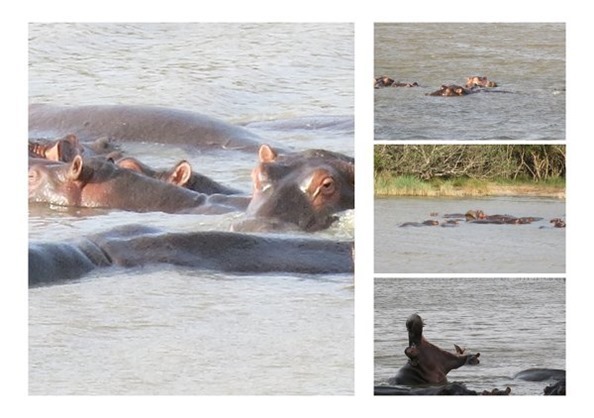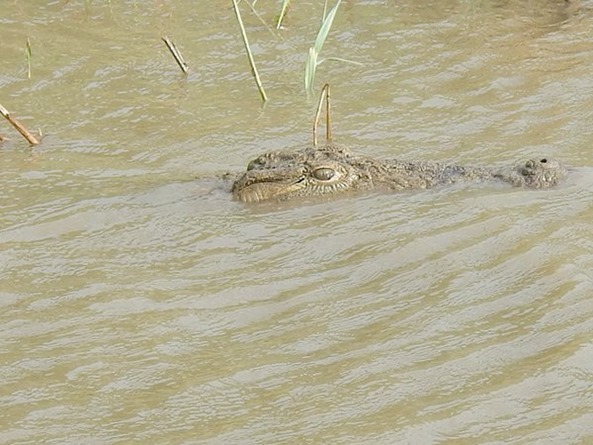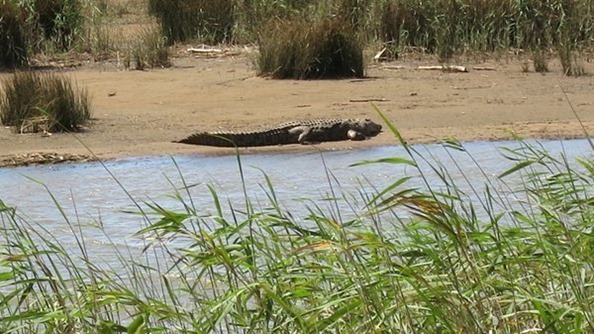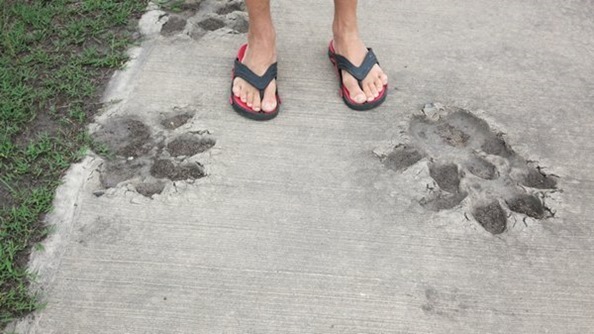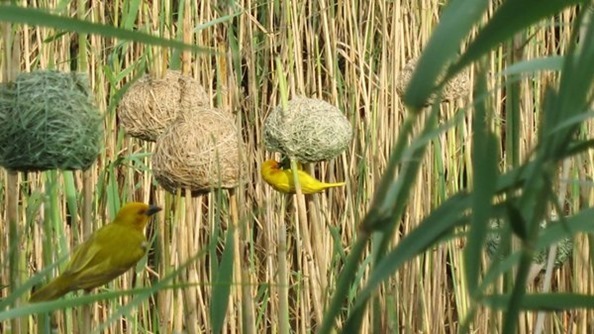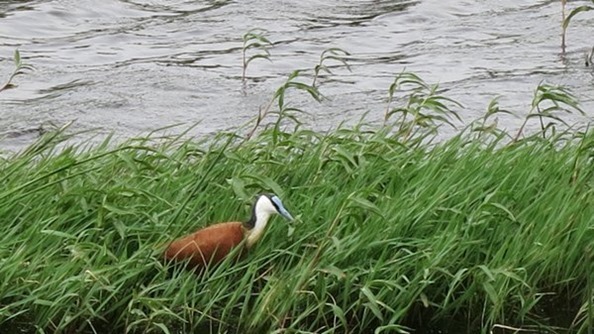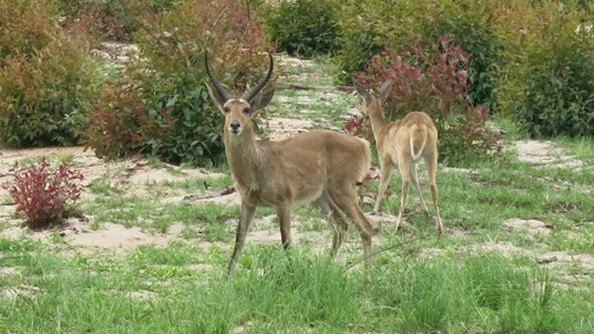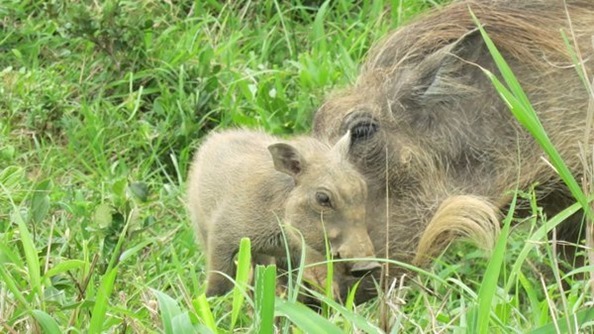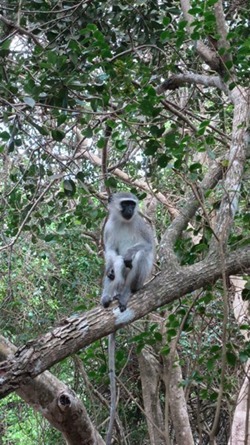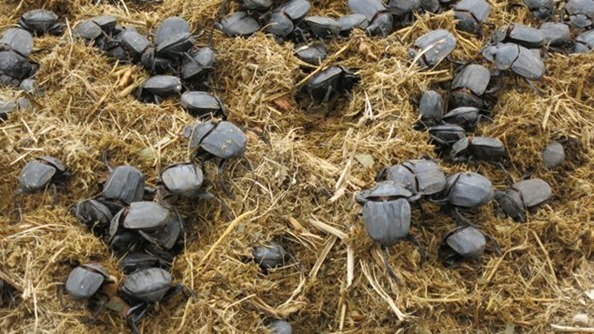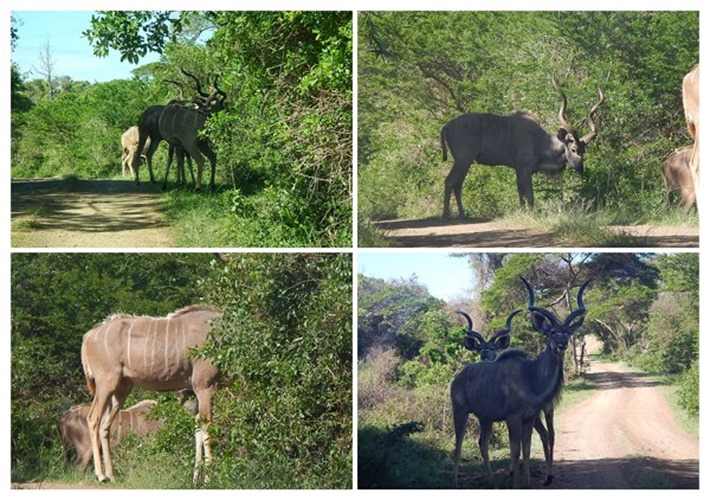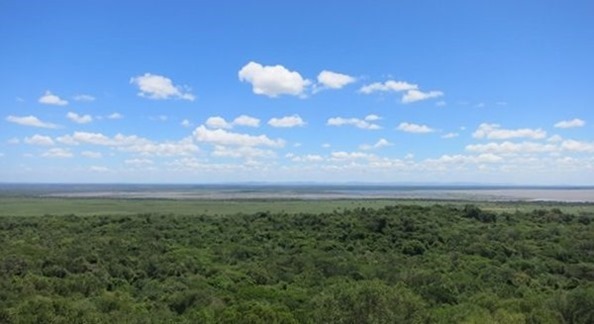iSimangaliso Wetland Park, St Lucia

|
Our
second safari experience was to
this wetland park. At St Lucia there is a large lake and associated wetland area
close to the coast but protected from the Indian Ocean by some high fossil
dunes. The road to the park passes through a rather unexpected landscape with
mile after mile of tree plantations mostly of eucalyptus but also other fast
growing species that are used mainly for wood chip and pulp
production.
The park is especially renowned for its hippos and crocs so we duly did a river trip up part of the lake and saw a number of pods of big male hippos and their harems.
The hippos are extremely dangerous as are the crocs which hide along the banks.
This guy is about 16 feet long with a fearsome looking tail.
Not a good place for a swim although we did see a pair of canoeists out for a paddle!
The river tour we took had a knowledgeable guide who was able to tell us a lot about the hippos and crocs. Apparently hippos cannot swim and they cannot float. To move they walk along the bottom and mostly just rest by standing in the shallows. The males have territories that they control aggressively even killing their own male offspring as competitors if they are given a chance. The hippos are nocturnal and use the rivers as dormitories during the day; they come out to graze at sunset onto the riverbanks, travelling up to 30 km a night and returning at dawn. The crocodiles will try to take the babies as the mothers give birth, otherwise they have no predators here.
These tracks (artificially embedded in a concrete path) give an impression of how big the animals are.
The park has much more to see than just the denizens of the shallows. Along the banks of the river these weaver birds had made their nests. It is the male bird that makes the nest . The female only comes along when it is finished. If she considers the nest is up to standard then the male and his new home win approval, but if the construction is below par the female simply destroys the nest and the poor male has to start again!
The African Jacana can often be seen stalking amongst the grass and reeds alongside the waterholes and banks of the lake.......
......sometimes in the company of the African sacred ibis.
There are trees, shrubs and flowers in profusion all with colourful blooms.
The animals are less obvious than in the other parks we visited but are there if you wait long enough or hope the best for your tyres and take the backtracks less used by most travellers.
We saw plenty of giraffe again and a giant water monitor lizard which was swimming around a pod of hippos seen at a waterhole or pan earlier in the day.
These are reedbuck
....and this, a young bush pig with its mum learning how to snuffle through the grass,
a greedy vervet monkey eyeing up our picnic,
and of course, at the tail end of all that the industrious dung beetles.
Our closest encounter with animals was late in the day, when we came around a corner in a well wooded part of the park to encounter a herd of about 10 male kudu. These animals are antelope but their size, especially when seen from a small car, is staggering. They stand at about 1.6 metres at the shoulder but on top of that they have a long neck, large head and some very impressive spiral horns that look as if they were meant to do a lot of damage.
One animal in particular would not move despite us revving the engine and tooting the horn. It was as if he had decided that this was his bit of road. We were a bit concerned that we could be stuck here beyond the park closing time so after about 20 minutes of worry we edged past under this one's nose. He barely gave a flicker of recognition! Apparently, we found out later, this slightly obstinate behaviour is typical and they are not at all aggressive. Even when fighting with other male kudus most of the interlocking of horns is symbolic and demonstrating status, rather than dangerous aggression. A truly handsome beast.
Some of the views across the park from the high sand dunes were stunning but it is a sad fact that the park is suffering from the combined effects of a prolonged drought and a reduction in the amount of water reaching the lake system. The result is that the water levels are falling and the water becoming increasingly saline. Already mangroves around the shores are dying but the knock on effects especially on the aquatic life are unknown. This park like the others we visited is extremely well run and managed but development is happening quickly outside the parks, and population pressure on resources like water is increasing. |

